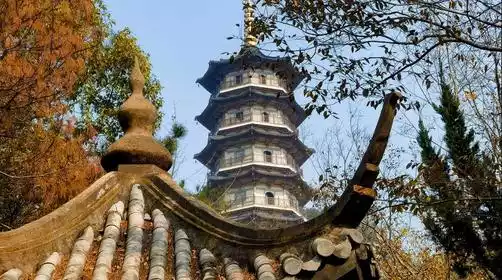1.Why didn’t I receive a text message notification after registering?
2. What if it rains during the event?
2-3 days before the event, we will decide whether the event will proceed as scheduled based on the weather forecast and route conditions. Please pay attention to our notifications. Most activities can proceed as usual even if there is light rain. There is still fun to be had on rainy days. If heavy rain is forecast, the event will be cancelled and a full refund will be given to everyone.
3. Is this route crowded?
Most of our routes are natural and niche, with relatively small traffic. Of course, it also depends on the registration situation for each period. Generally, ordinary models are 37-seat buses, and a few large models are 53-seat. Each car has a certain proportion of tour leaders to ensure the quality of the event.
Records of Xishan date back to ancient times, and the origin of the name "Xiaoshan" is also related to Xishan. According to records, during the late Spring and Autumn Period, Goujian and Fuchai fought a battle at Taihu Lake and retreated to Xishan. Looking down, Goujian sighed, "Everything is desolate." Xu Xun, a prominent scholar in the Eastern Jin Dynasty, built a hut at the foot of the mountain, describing it as "building a house leaning against the woods, feeling desolate and free." This desolate feeling became Xiaoshan's elegant nickname. Furthermore, Li Jifu's "Yuanhe County Chronicles" in the Tang Dynasty mentions Xishan as "Xiaoshan, one mile west of the county." Qian Zai, a Yuan Dynasty writer, wrote in his "Lin'an Collection" that "there is a mountain near the ruins of Goujian, named Xiaoshan." Xishan and Beiganshan served as the northwest barriers to Xiaoshan City. During the Jiajing period of the Ming Dynasty, Xiaoshan County Magistrate Shi Chen constructed the city, with the northwest section of the city wall resting against the mountain. Xishan, which borders Xianghu Lake, boasts numerous deep valleys, a tranquil environment, and numerous historical sites. The Yilan Pavilion on Shiyan Mountain was built by the county governor Hong Zhu in 1531, the tenth year of the Jiajing period of the Ming Dynasty, on Shiyan Mountain south of Xianghu Lake. "Yilan" means "an unobstructed view of the scenery of lakes and mountains." Every autumn, groups of people climb this mountain to gaze at the three rivers (Qiantang, Fuchun, and Puyang) and one lake (Xianghu), admiring the crimson leaves and yellow flowers. This is also known as "Shiyan Wangqiu," one of the Eight Scenic Spots of Xiaoshan. After ascending the mountain to admire the view, Zhou Yizao of the Qing Dynasty wrote the famous line: "Gazing around, the river tides and lakes are like a painting." The pavilion was destroyed by Japanese artillery fire in 1941, leaving only a few broken pillars. In 1994, the pavilion was rebuilt near the original site, and what we see today is the new pavilion from that period. Xianzhao Temple, located on Shiyan Mountain, was originally built in the Song Dynasty, meaning "the light of the rising sun first illuminates this temple." Destroyed by Japanese artillery fire in 1941, it has now been rebuilt. Climbing the temple, visitors can greet the first rays of morning light and enjoy the beautiful morning glow. Xishan in Xiaoshan is a wild mountain. During the entire journey, you will encounter bushes, winding bamboo forests, etc., so you must wear long sleeves and long pants and bring a walking stick.
2. Tiger Cave Mountain, 218 meters above sea level, features two misshapen boulders embedded in the mountain, connected at their tops and barely wide enough for one person to enter or exit. Legend has it that this is where Goujian, King of Yue, slept on firewood and tasted gall. Beneath the cave lies the Lotus Temple, once one of the "Eight Scenic Spots of Xianghu Lake." Formerly known as the Lotus Temple, it's also known as the Tiger Cave. "Xiaoshan Culture" records that three kilometers west along the mountain ridge from Chengshan (also known as "Yuewang Terrace") lies the site of the Lotus Temple. Behind the temple, two massive boulders meet at their tops, leaving a hollow space like a bucket below, hence the name Tiger Cave. A Ming Dynasty couplet, composed by Liu Zongzhou, reads: "This place was once known for tasting gall, and even here, I still remember sleeping with a bride." The Lotus Temple, designed entirely by folk artists, follows the terrain, free-standing in form, with its halls arranged in a staggered pattern, creating a unique style. From a distance, the Lotus Temple resembles an exquisite relief sculpture, resplendent in gold amidst lush greenery. Halfway up the mountain, there's the Sanjiang Pavilion, offering a panoramic view of Sanjiangkou (the confluence of the Qiantang, Fuchun, and Puyang rivers). On a boulder in Tiger Cave, a statue of Guanyin, formed from a natural blend of rock and thatch, stands majestically and vividly, earning it the nickname "Living Guanyin."








